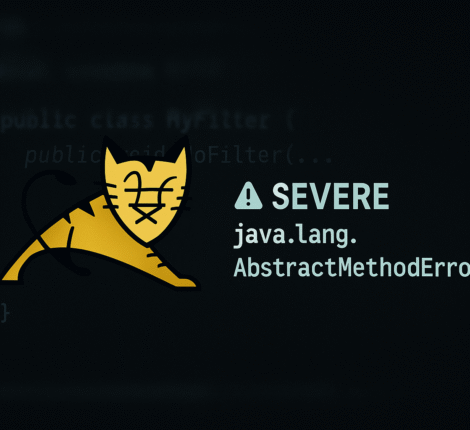Table of Contents
- Introduction
- What Is Liquibase and Why It Matters
- The Challenge: DAO and Changelog Drift
- Case Study: Refactoring
LinksDao - Testing and Validation
- Best Practices for DAO–Liquibase Synchronization
- Conclusion
Introduction
Maintaining consistency between your database changelogs and Java Data Access Objects (DAOs) is crucial for reliable application behavior. When column names or their order changes in Liquibase migrations, overlooked DAO code can lead to subtle bugs or runtime errors. In this article, you’ll discover how to align your DAO with Liquibase, using a real-world example of refactoring a LinksDao class to match its changelog.
Key takeaways:
- Why consistent column naming matters
- How to update INSERT/UPDATE statements
- Techniques to refactor parameter mapping
- Best practices for long-term maintainability
What Is Liquibase and Why It Matters
Liquibase is an open-source database schema change management tool that allows you to track, version, and apply incremental changes to your database structure using changelogs (XML, YAML, JSON, or SQL). By defining schema changes in version-controlled files, you ensure that every environment—from development to production—stays in sync.
Benefits of Liquibase:
- Version-controlled schema changes
- Rollback support for safe migrations
- Database-agnostic change definitions
- Automated CI/CD integration
The Challenge: DAO and Changelog Drift
Over time, your database schema evolves:
- Columns are renamed for clarity or compliance.
- Columns are reordered for performance or convention.
- New columns are added to support features.
If your Java DAO still references old column names or positional parameters, your SQL will break. Typical symptoms include:
SQLException: column not found- Incorrect data being inserted or updated
- Mismatches between your entity mapping and actual schema
To prevent these issues, a systematic refactoring approach is necessary whenever your Liquibase changelog is updated.
Case Study: Refactoring LinksDao
Let’s walk through a concrete example: migrating a LinksDao class to align with a Liquibase changelog that defines a links table.
Matching Column Names
Liquibase changelog snippet:
<createTable tableName="links">
<column name="consent_id" .../>
<column name="resource_id" .../>
<column name="cash_account_type" .../>
<column name="sca_redirect" .../>
<column name="start_auth_with_psu_id" .../>
<!-- ... other columns ... -->
</createTable>
Action:
- Audit your DAO’s SQL statements and replace any outdated names (e.g.,
start_authorisation_with_psu_identification) with the new names (start_auth_with_psu_id). - Ensure every
SELECT,INSERT, andUPDATEuses the exact column names declared in your changelog.
Reordering SQL Statements
Liquibase defines column order for INSERT without impacting SELECT, but positional VALUES(?, ?, …) in DAO must match:
private static final String INSERT_LINKS =
"INSERT INTO links(consent_id, resource_id, cash_account_type, sca_redirect, start_auth_with_psu_id, …) " +
"VALUES(?, ?, ?, ?, ?, …)";
Action:
- Reorder the parameter placeholders
?to reflect the changelog’s column sequence. - Update both the DAO’s
INSERTandUPDATEstatements accordingly.
Refactoring Parameter Mapping
Originally, you might have a setLinkParameters(PreparedStatement ps, Links links) that assumes old ordering. Refactor it to accept an offset:
private void setLinkParameters(PreparedStatement ps, Links links, int offset) throws SQLException {
// offset 4 for INSERT (first three are consent_id, resource_id, cash_account_type)
ps.setString(offset, links.getScaRedirect().getHref());
ps.setString(offset + 1, links.getStartAuthWithPsuId().getHref());
// …and so on…
}
Action:
- Introduce an
offsetargument so the same mapping method works for bothINSERT(offset = 4) andUPDATE(offset = 1). - Centralize null checks and
Types.VARCHARhandling to avoid duplication.
Handling Unmapped Columns
Your changelog may define additional columns (e.g., pagination links like first, next, previous, etc.) that your domain object doesn’t cover. For these:
- Option 1: Set them to
NULLin your DAO until they’re needed. - Option 2: Extend your domain object to include these links and update
setLinkParametersaccordingly.
// Example: setting an unmapped column to NULL
ps.setNull(offset + 20, Types.VARCHAR); // start_auth_w_auth_method_sel
Testing and Validation
- Unit Tests: Mock your
DataSourceand verify the generated SQL uses correct column names and parameter order. - Integration Tests: Run against an in-memory database (H2) initialized by Liquibase to catch mismatches early.
- CI/CD Pipeline: Include Liquibase migrations and DAO tests in your build process to prevent regressions.
Best Practices for DAO–Liquibase Synchronization
- Single Source of Truth: Maintain column names only in your changelogs; generate DAO SQL via templates or code generation where possible.
- Automated Checks: Use tools like jOOQ-codegen or MyBatis Generator to auto-generate DAOs from schema definitions.
- Versioning Discipline: Every changelog update should trigger a DAO review in the same pull request.
- Clear Naming Conventions: Adopt consistent abbreviations (
scavs.start_auth), reducing find-and-replace errors.
Conclusion
Synchronizing your Java DAO with Liquibase migrations is essential for robust, error-free database operations. By:
- Matching column names exactly
- Reordering SQL parameters to align with changelogs
- Refactoring parameter mapping for reuse
- Handling unmapped columns gracefully
…you’ll ensure your application stays reliable as your schema evolves. Implement these techniques today to keep your DAO rock-solid and your CI pipeline green!


